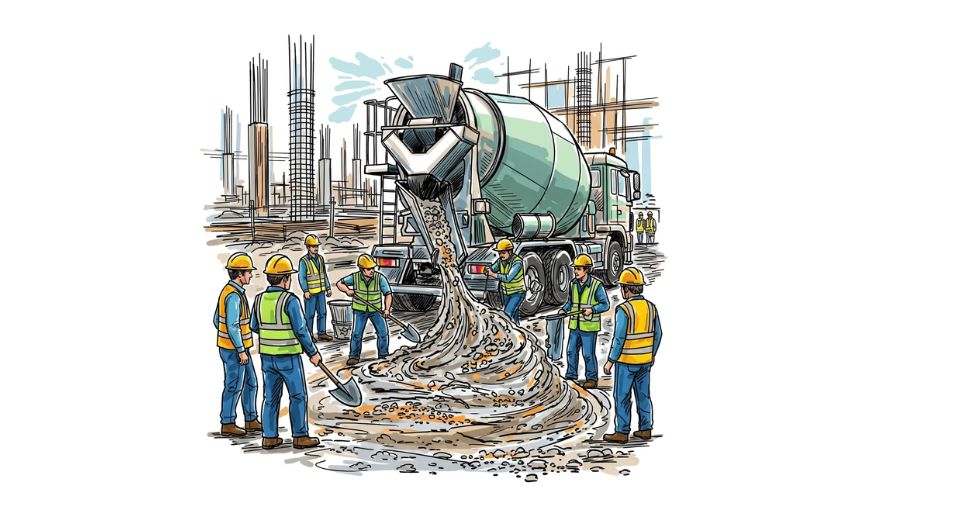
Aug 06, 2025

Metastat Insight latest report provides new insights into global direction and emerging trends in the Global Mix Concrete Market. This thoroughly researched report dives deep into the commercial and industrial subtleties that characterize this industry. Rather than reproducing tired mantras, the report provides a compelling representation of regional dynamics, production processes, economic factors, and strategy changes among players in the industry. The concrete mixing industry, previously assumed to be dominated by conventional building needs, is now facing a change in perception, operation, and methodology, all of which are well explained in this new research series.
On continents, the market is experiencing a convergence of diversification of demand and innovation in production, compelling companies to pivot their strategy. It is no longer sufficient to rely on high-volume infrastructure projects to sustain commercial development. The report explains how new architectural styles, urban regeneration initiatives, and localized construction practices are forcing manufacturers to redesign product make-up and supply chain approaches. The subtle interplay of cultural, environmental, and logistical factors is leading to a kaleidoscope of practices, all under the wide rubric of mix concrete production and application.
Metastat Insight research highlights the manner in which the availability of resources, both human and material, becomes instrumental in influencing results across geographies. It is against such a backdrop that raw material procurement has assumed a new meaning. An industry like concrete, one that is traditionally linked with stability and predictability, is now coming under scrutiny for dependence on resources. In many parts of the world, supply constraints, transportation issues, and regulatory barriers have necessitated a redesign of how businesses organize and execute manufacturing. By doing this, some organizations are tending towards more regionalized production cycles to cut down on operational drag while improving product flexibility.
One notable trend highlighted by the report is the changing dynamics between developers, contractors, and manufacturers. These connections are becoming more collaborative in nature than transactional. Producers are increasingly engaged early in the project design phase, providing advice on material specifications to meet sustainability criteria or logistics scenarios. This increased engagement implies a shift from commoditized product thinking to more holistic service models where the concrete itself is only part of a solution set.
One also needs to look at how the Global Mix Concrete Market is indirectly being influenced by the broader macroeconomic trends. Monetary policy, trade agreements, and financial market forces have all trickled down and impacted capital investment within the construction industry. These fiscal waves are seen in procurement, production schedules, and even the duration and sophistication of supplier contracts. Instead of being peripheral factors, these economic undertows are now at the forefront of business model viability in this sector.
The technological link that is being built between old-style manufacturing and digital systems is another impressive observation contained in the Metastat Insight report. Automated batching system integration, smart delivery tracking, and performance monitoring tools are increasingly becoming the norm, changing not just the efficiency of operations but also the demand for workforces. This change, though still underway across much of the globe, represents a slow movement from human control to data-driven decision-making. As businesses evolve further, the gap between large-scale production and smaller producers may continue to grow, depending on how well each is able to assimilate these new capabilities.
Geographically, the market does not act uniformly. What constitutes best practice in one part of the world can be completely inappropriate elsewhere because of environmental, regulatory, or cultural differences. Metastat Insight picks up on this variety with acumen, observing how city density, climate fluctuation, and land use policy all work together to create a customized version of global trends. Pricing, product strategy, and delivery vehicles also are affected by this variety, requiring firms to remain flexible in their plans.
The competitive balance is also shifting. Consolidation among the industry's largest players has resulted in greater specialization by mid-sized and smaller companies. These specialized companies tend to base their success on under-served markets or specialized formulations for specific applications. The report identifies an increasing number of partnerships between producers and universities, a trend likely to contribute to advances in materials science and application technology. Such partnerships could increasingly set new performance standards throughout the market.
The work side of the Global Mix Concrete Market also warrants consideration. With increasing technology capabilities comes a shift in the expectations placed on employees. Rather than simply completing mundane tasks, there is now more of a focus on technical schooling, computer literacy, and interdisciplinarity. This change can have long-term effects on workforce development, recruitment practices, and even union bargaining. Firms that are capable of matching their human resource strategy with these new needs will likely be better placed to take advantage of industry changes.
In conclusion, the complete overview presented by Metastat Insight's latest publication gives more than a snapshot, but complete examination of the layers that constitute the Global Mix Concrete Market. It does not make surface-level assumptions but brings forth the deeper shifts remapping the sector. As different forces economic, technological, environmental, and collaborative continue to intersect, this market will ride a complicated journey. The report details these changes in cogency and precision, providing worthwhile guidance to those who wish to see the larger implications of current industry trends.
Drop us an email at:
Call us on:
+1 214 613 5758
+91 73850 57479